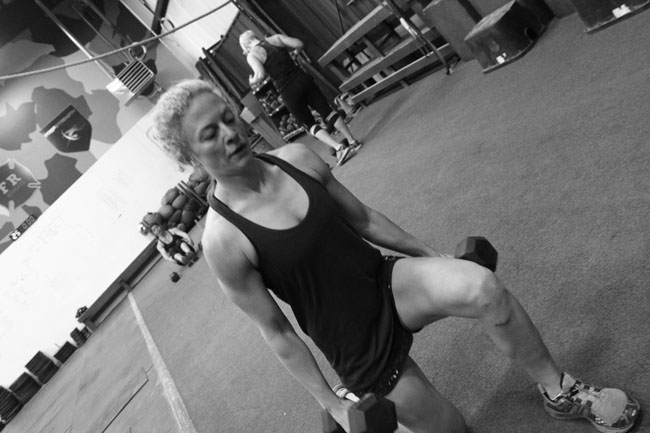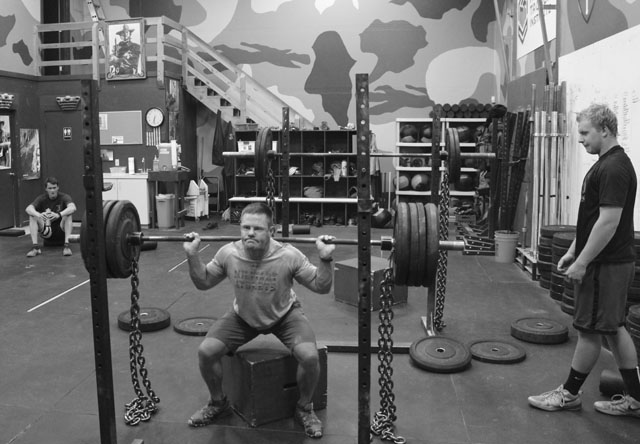By Rob Shaul
Years ago as a young Ensign in the Coast Guard I was training with a big Samoan guy in a tiny little gym in Juneau, Alaska. Johnny was a former Alaska State Power Lifting Champion, and that day he said we were going to do the “pull.”
Johnny then set up the barbell and started doing some light deadlifts. Until then, I’d just considered the deadlift a leg exercise, but was too embarrassed to ask him why he called it the “pull.”
Soon, as the weight increased and Johnny began doing offering me pointers. He told me not to think of “pushing” my heels into the floor to lift the barbell but to “pull” the barbell up with my butt and hamstrings. Johnny’s simple coaching cue, forever changed the way I thought about the deadlift and leg training in general.
It’s easy to understand and see the difference between “pulling” and “pushing” with your arms. From my old bodybuilding workout days, we used an EZ curl bar to “pull” the bar up using our biceps, and then, laying on the bench doing skull crushers, “press” the barbell up with our triceps.
In terms of the lower body and legs, when we prescribe a lower body “push” exercise, we’re prescribing a lower body exercise which trains the anterior, or front, part of the legs – the quads. Think Front Squat.
A lower body “pull” exercise trains the posterior chain of the lower body – the butt and hamstrings.
Below are my current favorite lower body “pull” exercises:
1. Loaded Walking Lunge
The walking lunge exercise – loaded either with a barbell behind your neck or more commonly, holding dumbbells or kettlebells in each hand – is deceptive. Doing the exercise, all you can feel is your quads fatiguing. But the next morning, or even later in the day, it’s your butt and hamstrings which scream.
For whatever reason, the loaded walking lunge hammers the butt and hamstrings like no other exercise in my exercise menu. It’s nearly a perfect exercise – focused, transferable, and simple.
We’ve done walking lunges with sandbags, dumbbells/kettlebells, and barbells. Sandbags don’t get heavy enough, and barbell walking lunges, which can get super heavy, also take a lot of space, and if the athlete reaches failure – there’s no place to escape.
I’ve found loading with dumbbells or kettlebells to be the most simple and most safe, way to load walking lunges. In terms of set/reps, in general, I like 6 sets of 4-5 reps to train strength. I’ve found that I can’t load my athletes heavy enough for 3 reps, but can for 4-5 reps. When I say 5 reps, I mean 5 steps each leg, 10x total.
→ Video: Loaded Walking Lunge

2. Hinge Lift
The Hinge Lift is our preferred exercise over the traditional deadlift. Other coaches call it the “Romanian Dead Lift.”
Many coaches consider the deadlift to be the king of lower body pull exercises – and there’s a reason it’s is one of the three exercises tested in powerlifting competitions.
However, years ago, we moved to the “Hinge Lift” because I found it more effective at targeting the butt and hamstrings, than the deadlift. Also, I found it safer.
The Hinge Lift has two significant downsides: (1) It can be difficult to learn for many athletes; (2) Bad form and/or not paying attention to keeping the back “set” in extension can lead to injury.
By far, I’ve found men struggle more than women to learn the Hinge Lift. Most women pick it up immediately, but 50% of men, struggle. I’m not sure why – but it could be related to tighter hamstrings in men.
Safety is another issue. There’s a reason that many college strength and conditioning coaches don’t allow the deadlift in their gyms – it’s considered by many to be the most dangerous lift in the weight room. For example, early last Summer I spent a day observing the University of Wyoming football strength coaches coaching the football team through a strength session which included deadlifts. Even with 1 coach, per platform, I saw many players with rounded backs lifting heavy weight and risking injury.
These are significant drawbacks, but for athletes who can master the form, and be smart about loading, the Hinge Lift is a great lower body “pull” exercise.
→ Here’s a video on how I coach the Hinge Lift:
3. Box Squat
I know the Box Squat looks a lot like the back squat – one of our favorite lower body “press” exercises, and I can’t explain why this exercise hits the butt, hips, and hamstrings the way the back squat doesn’t – but it does.
There are a couple significant differences between the two exercises. First – for the box squat the foot stance is significantly wider, and I coach athletes to flare or point their toes out.
Second, at the bottom of the Box Squat, I instruct athletes to totally unload their legs when they sit on the box, and then “explode up” when they take tension again.
For whatever reasons, the wider stance, flared out toes, and total unload really stimulate the hips and hamstrings.
In terms of box height, we generally use 15″. In general, for box height, you want the athlete’s thighs at parallel or slightly below parallel in the bottom of the exercise.
Another cue I use is to tell athletes to “push up with your hands like a military press” when first taking tension. This helps them rise with their chest first, and avoid excessive forward lean.
Anectdotally, one thing I’ve experienced with myself and a few of my athletes is, it’s possible to hit failure doing the box squat suddenly. You’ll get 4 of 5 reps fine, but suddenly get weak for the 5th rep. You don’t feel it coming.
For this reason, I always have athletes spot each other when doing heavy box squats.
→ Video: Box Squat

Questions, Comments, Feedback? Email coach@mtntactical.com
You Might Also Like MTI’s 3 Favorite Lower Body “Push” Exercises
